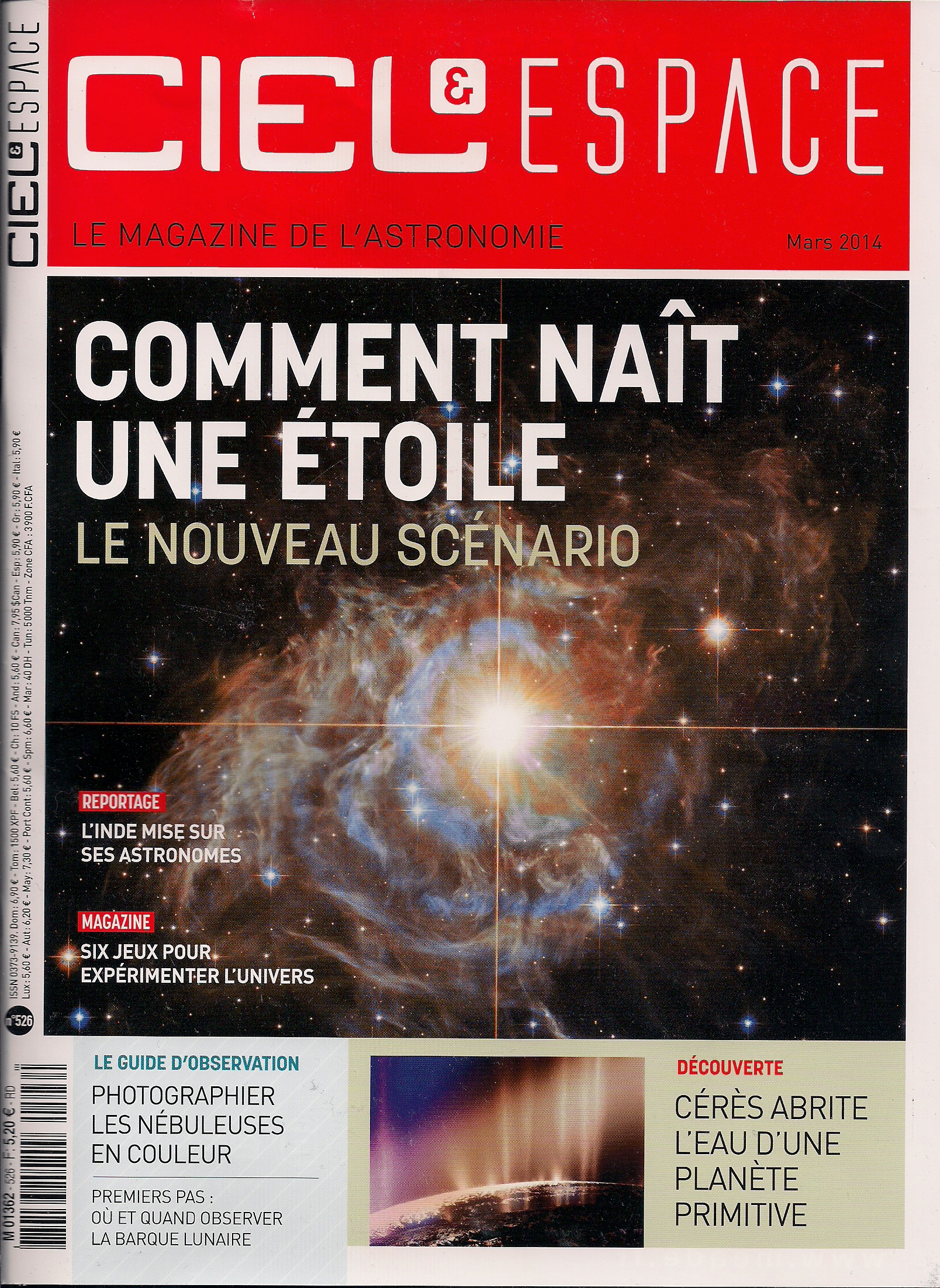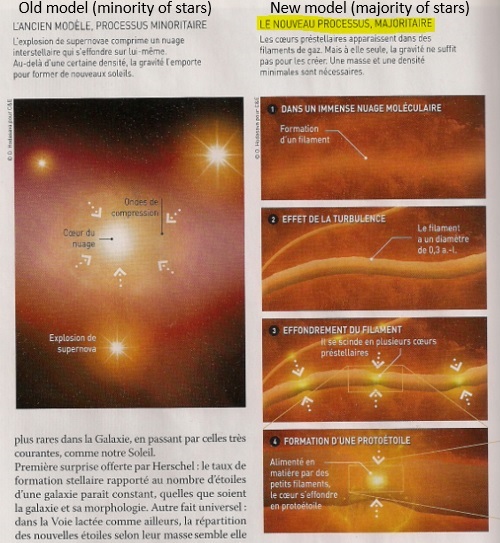I recently stumbled across an interesting French astronomy magazine at an airport shop. There it was, written boldly on the front page of Ciel & Espace magazine; “HOW A STAR IS BORN – The New Scenario”. According to Herschel conference organizers (Netherlands, 2013) as quoted on page 25, “A new paradigm” of star formation emerges. This new paradigm would have been inspired from Herschel observations of the Gould Belt. Here were some of the highlights of the article:
- The rate of star formation with respect to the number of stars in a galaxy appears constant, regardless of the size of the galaxy.
- In the Milky Way, as in other galaxies, most of the new stars are about the same mass (roughly that of our Sun or a bit smaller).
- The majority of new stars are formed along gaseous filaments several light years long and 0.3 light years thick.
- The filaments “pinch” and form stars when the filament density reaches about 5 solar masses per light year.
The article describes matter as “falling into the center” of these filaments when they are pinched, without giving any details about the process, aside from some vague references to magnetic fields. Well, at least they didn’t resort to Dark Energy, there really is progress!
At ElectricAstronomy.com, we know these so-called gas filaments are electrically conducting plasmas, galactic scale Birkeland currents. These currents create a magnetic field and self-organize into filaments, and under the right conditions can get magnetically pinched. The French mainstream astronomy is still behind the curve, but they took a small step towards 21st century cosmology. They also brought to light some very interesting Hershel observations which I’m curious to know more about.
Below is an excerpt from the article, with diagrams of typical magnetic pinches (although they don’t call it that):



Recent Comments